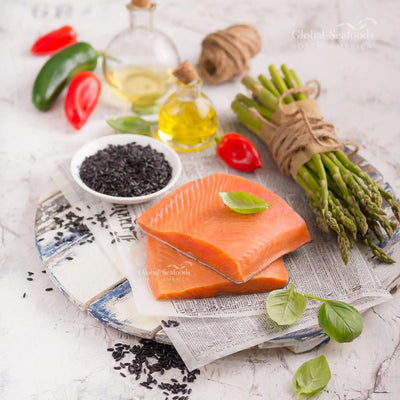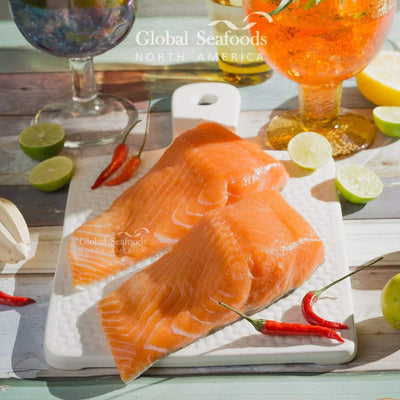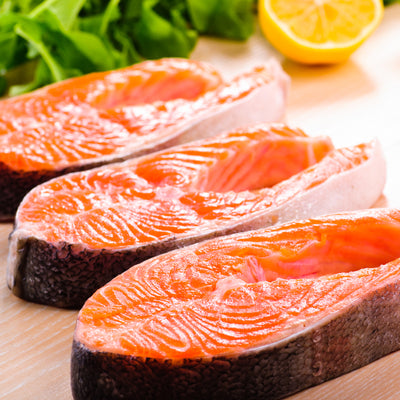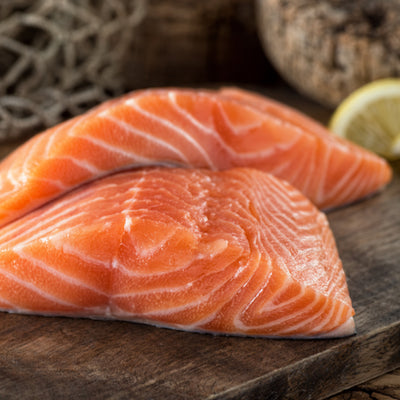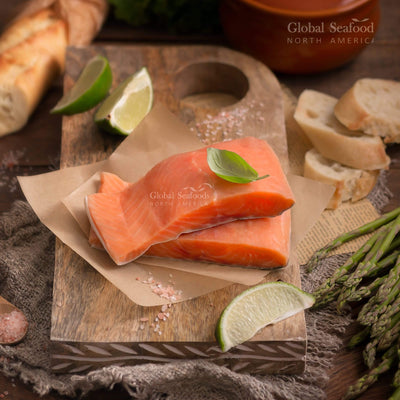How to Remove Skin from Wild Alaskan Sockeye Salmon Like a Pro

How to Remove Skin from Wild Alaskan Sockeye Salmon Like a Pro
Removing the skin from wild Alaskan sockeye salmon may seem challenging, but with the right technique and tools, it can be done quickly and efficiently. Whether you're preparing salmon for grilling, pan-searing, sushi, or baking, learning how to remove the skin properly will ensure better texture, even seasoning, and professional-quality results.
In this step-by-step guide, we’ll walk you through the best techniques for skinning sockeye salmon, compare the benefits of keeping the skin on vs. removing it, and provide expert tips for optimal preparation.
🔗 Shop Fresh Wild Sockeye Salmon:
👉 Buy Sockeye Salmon Fillets
👉 Order King Salmon Online
Why Remove the Skin from Sockeye Salmon?
While salmon skin is edible and rich in Omega-3s, some recipes call for skinless fillets. Here’s why you might want to remove the skin:
✔️ Better texture for raw preparations like sushi, ceviche, and tartare.
✔️ Even seasoning and marinade absorption.
✔️ Cleaner presentation for baked or pan-seared salmon dishes.
🔗 Looking for Premium Wild Salmon?
👉 Order Coho Salmon Portions
Step-by-Step Guide to Removing Sockeye Salmon Skin
Step 1: Gather the Necessary Tools
Before you begin, make sure you have the following:
✔️ A sharp fillet knife – Essential for a clean cut.
✔️ A sturdy cutting board – Prevents slipping.
✔️ Kitchen tongs or a paper towel – Provides a firm grip on the skin.
🔗 Get High-Quality Wild Salmon for Cooking:
👉 Buy Salmon Belly Strips
Step 2: Prepare the Salmon
✔️ Pat the fillet dry with a paper towel to remove moisture.
✔️ Place the fillet skin-side down on a stable surface.
✔️ Ensure your knife is sharp for precision cutting.
🔗 Shop Fresh Wild Salmon for Your Next Dish:
👉 Order Chum Salmon Fillets
Step 3: Make a Small Incision at the Tail End
✔️ Using your sharp knife, make a small cut between the skin and the flesh at the tail end of the fillet.
✔️ Be careful not to cut too deep—you only want to separate the skin, not remove excess meat.
💡 Pro Tip: If your fillet doesn’t have a tail end, start from the thinner side for better control.
Step 4: Grip the Skin Firmly
✔️ Use kitchen tongs or a paper towel to grip the skin securely.
✔️ Holding the skin tightly prevents slipping and makes the process smoother.
🔗 Get the Best Wild-Caught King Salmon:
👉 Buy Copper River King Salmon
Step 5: Glide the Knife Under the Skin
✔️ With the knife angled slightly downward, start slicing between the skin and the flesh.
✔️ Use a gentle sawing motion while pulling the skin taut.
💡 Pro Tip: Keep the knife as close to the skin as possible to avoid wasting any salmon meat.
Step 6: Continue Removing the Skin
✔️ Work your way from the tail to the head in one smooth motion.
✔️ If needed, adjust your grip on the skin to maintain control.
🔗 Shop Sustainably Sourced Wild Salmon:
👉 Buy Silver Salmon Fillets
Step 7: Trim Any Leftover Skin Pieces
✔️ Inspect the fillet for any small pieces of skin left behind.
✔️ Use your knife to carefully trim them off for a clean and professional finish.
What to Do with Leftover Salmon Skin?
Don’t throw it away! Salmon skin is nutritious and delicious. Here are some ideas:
🔥 Crispy Salmon Skin Chips – Pan-fry with salt for a crunchy snack.
🍣 Use in Sushi Rolls – Adds extra flavor and texture.
🥗 Salmon Skin Salad – Toss with greens, sesame seeds, and soy dressing.
🔗 Order Wild Salmon for Your Next Dish:
👉 Shop Fresh Wild Salmon
FAQs About Removing Salmon Skin
Q1: Should I remove the skin before or after cooking?
✅ It depends on the recipe. Removing it before cooking allows for even seasoning, while leaving it on helps retain moisture.
Q2: Can I remove salmon skin after cooking?
✅ Yes! Cooked salmon skin peels off easily, but pre-removal is better for precise cuts.
Q3: Is salmon skin healthy?
✅ Yes! It’s high in Omega-3s, collagen, and healthy fats, which benefit heart health, joints, and skin.
Q4: How do I keep my fillet knife sharp?
✅ Use a honing rod or whetstone regularly for precision cutting.
Why Choose Wild Alaskan Sockeye Salmon?
Wild Alaskan Sockeye Salmon is:
✔️ 100% Natural & Sustainably Sourced – No antibiotics, no artificial coloring.
✔️ High in Omega-3 Fatty Acids – Supports heart and brain health.
✔️ Rich in Protein & Essential Nutrients – Perfect for a healthy diet.
🔗 Order the Best Wild-Caught Salmon Online:
👉 Buy Sockeye Salmon Fillets
Conclusion: Master the Art of Skinning Wild Sockeye Salmon
With practice and the right technique, removing sockeye salmon skin is quick and easy. Whether you’re preparing sushi, pan-seared salmon, or baked fillets, properly skinned fish ensures the best flavor and texture.
🔗 Ready to Cook with the Best Wild Salmon? Order Now!
👉 Shop Fresh Wild Sockeye Salmon
👉 Watch Salmon Cooking Tips on Global Seafoods YouTube
Happy cooking! 🎣🔥
Also in News

How to Make Sea Bream Sushi With Dry-Aged Tuna & Crab Roll — Step-by-Step With Chef Joshua
A complete guide to making Sea Bream sushi at home, including filleting, curing, slicing, and building a Dry-Aged Tuna & Crab sushi roll. Chef Joshua shares professional tips for restaurant-quality results.

The Boiled Crab in Popular Culture: From Cajun Cuisine to Trendsetting Restaurant Phenomenon
From spicy Cajun-inspired seafood boils to hands-on dining experiences, The Boiled Crab has left a unique mark on popular culture. Discover its cultural roots and culinary influence.

Boiled Crab for Game Night: Everything You Need for a Perfect Seafood Party
Take your game night to the next level with a Boiled crab party. Learn the best recipes, cooking tips, and hosting hacks for a memorable seafood feast.


